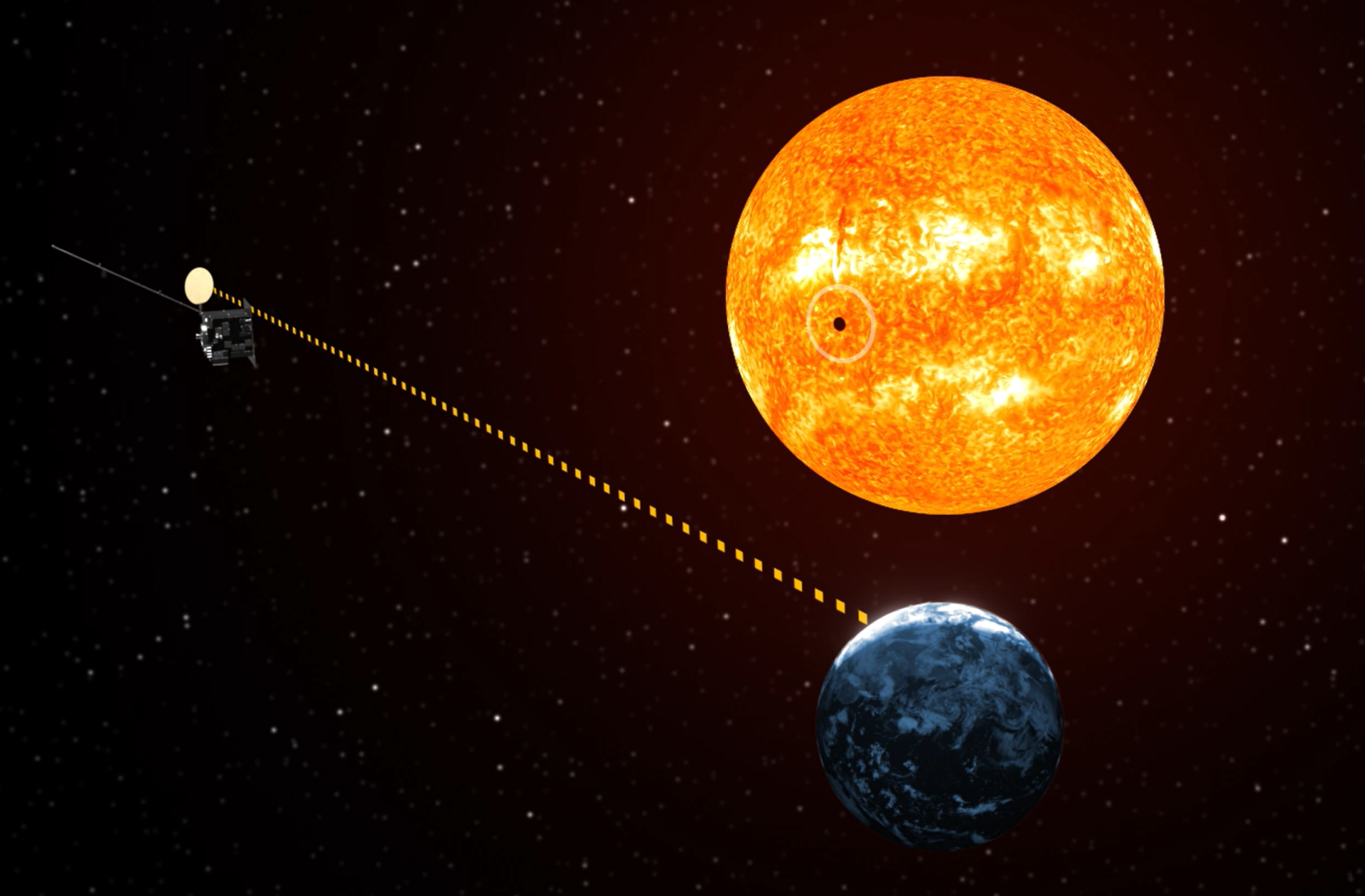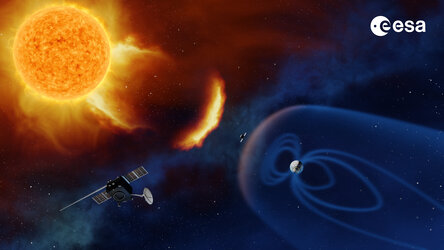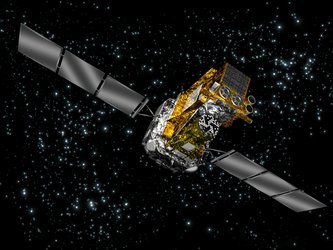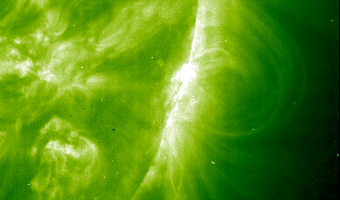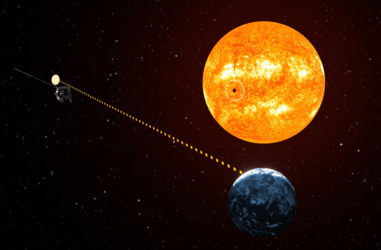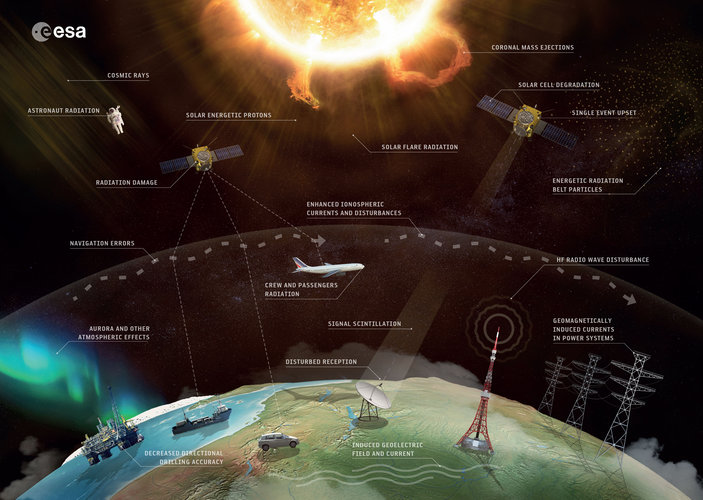Introducing ESA Vigil: Earth’s devoted solar defender
In brief
It’s the first mission of its kind, set to monitor our active and unpredictable Sun and help protect us from its violent outbursts – and it has a new name.
In-depth
Once known as “Lagrange,” ESA’s upcoming space weather mission needed a new name that would reflect its vital role: helping to protect Earth’s infrastructure, satellites, inhabitants and space explorers from unpredictable but violent solar events like solar flares and ‘coronal mass ejections’.
With 5422 submissions from across Europe and indeed around the world – and after weeks of deliberation, countless spreadsheets, three diverse and expert judges and a lively debate – a new name has been selected for our upcoming space weather mission: ESA Vigil.
ESA Vigil

Thousands of thoughtful, clever and funny names were submitted in the Agency’s #NameTheMission mission contest, which ran from May to September 2021.
Once submissions closed, a team from ESA’s Communication department and Space Weather Office reviewed all submissions putting a shortlist of just nine names before a panel of invited, external judges.
Armed with their top three respective choices, the judges then took part in a lively, two-hour video chat in which they made the case for their favourite and deliberated the merits of each. Finally, they agreed on a winner.

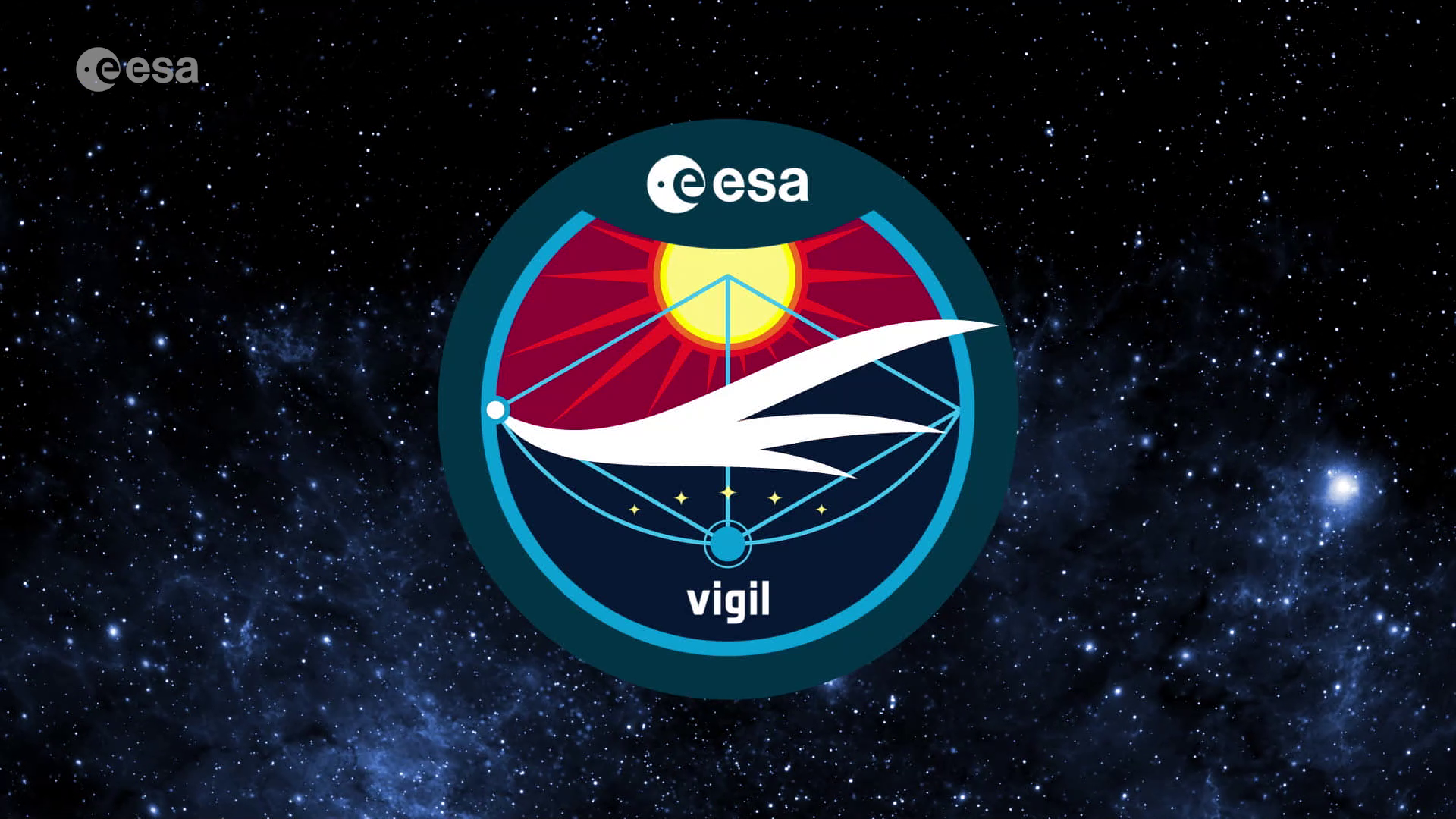
Access the video
“We are thrilled with our mission’s new name,” explains Juha-Pekka Luntama, ESA’s Head of Space Weather.
“When I first heard it, I thought it was just spot on. That is exactly what we do, we keep a vigilant watch and guard Earth”.
In Latin, ‘vigilis exceptus’ means sentry, or guard, while ‘vigilia’ means wakefulness and the act of keeping a devoted watch. The judges were particularly impressed with how the name resonated with the mission’s role – as a devoted guardian, keeping constant watch over the Sun, for Earth.
The patch
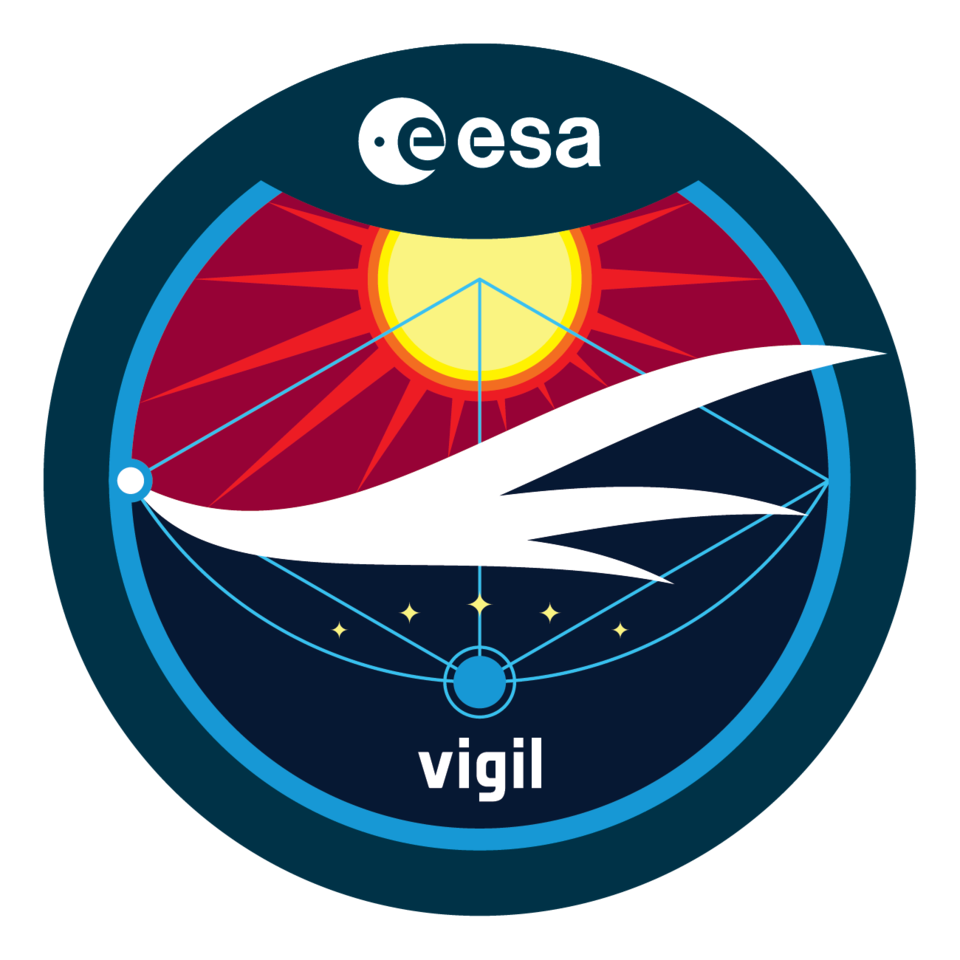
Almost immediately, ESA’s design team began working on a patch that would evoke Vigil’s meaning. Throughout various iterations, the symbol of a soaring, watchful bird remained.
Emmet Fletcher, Head of ESA’s Branding and Partnership Office explained the rationale behind the patch.
“In this stunning design, the team has depicted a stylised wing of protection which shelters Earth from the Sun’s hazardous radiation. The wing emanates from Vigil’s orbital position and the critical geometry of this Lagrange point relative to the Earth and Sun is traced out. To balance out the mission patch, the L5 point is emphasised with the five stars shown just above the blue Earth.”
And it’s the position of the wing, originating from the side of the Sun-Earth system, which really pleased the mission team.
“We really like the patch design and how it still incorporates the vital importance of geometry to this mission,” explains Giuseppe Mandorlo, Mission Manager for ESA Vigil.
“The Vigil mission will get a sneak peek of potentially hazardous solar activity only because of its location in space. Trailing ‘behind’ Earth at the fifth Lagrange point, ESA’s Vigil will see the side of the Sun, observing conditions before they rotate around to face our home.”
The judges
A key focus of the name campaign was to engage with a range of people from across Europe and give them the opportunity to express their perspective on our planet, space and the role of this important new mission.
To cement the most appropriate mission name, ESA decided to invite a trio of external judges who would decide on behalf of Europe and its citizens. The judges, external to ESA but experts in their varied and diverse fields, chose the winning submission.
Andrea Marcolongo
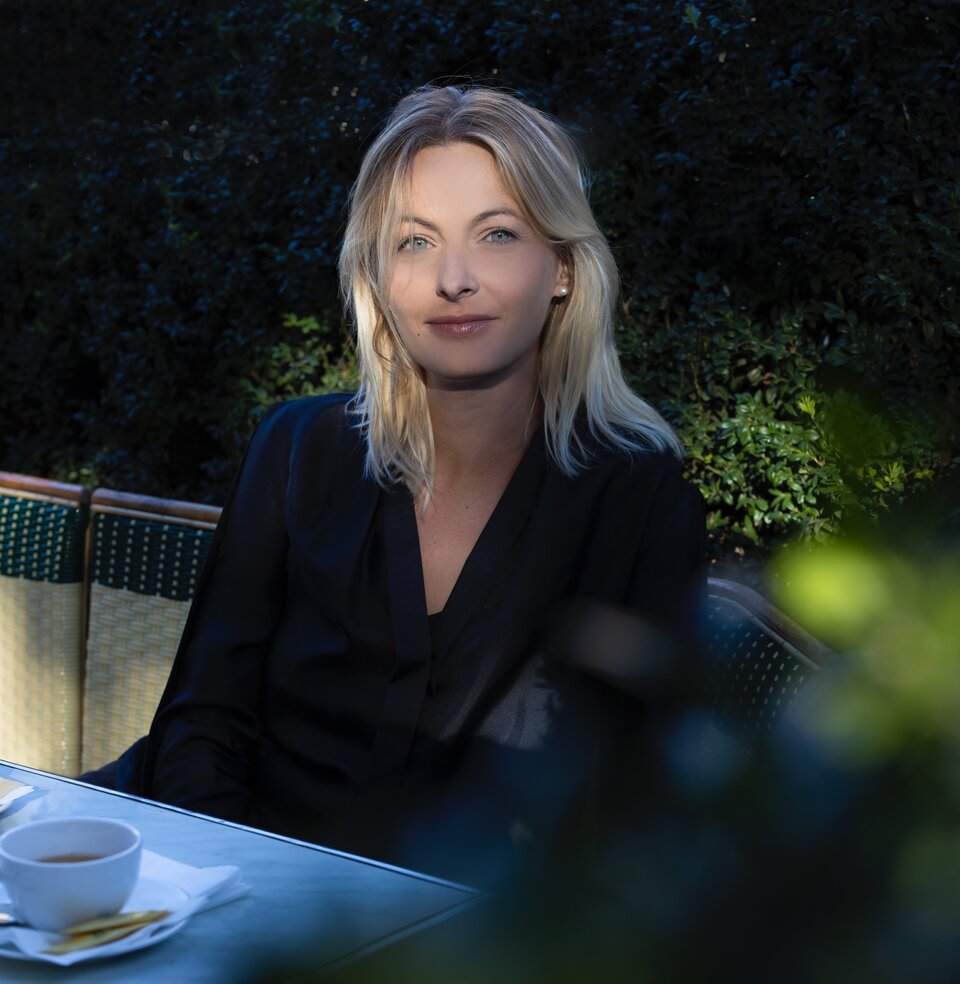
Andrea Marcolongo is an Italian writer and journalist. Currently living in Paris, she graduated in Classical Studies at the University of Milan and is the author of “The Ingenious Language: Nine Epic Reasons to Love Greek”; “The Heroic Measure”, about the myth of the Argonauts; “At the source of the words”, a compendium of ninety-nine etymologies and “Starting from Scratch. The life-changing lesson of Aeneas”.
“It was not easy to choose among the different names, languages, myths, but ‘Vigil’ was my final choice,” explains Andrea Marcolongo, best-selling Italian author and one of three judges on the panel.
“ESA Vigil is easy to remember but also smart, immediately illustrating the goals of the mission and it refers to a general idea of caring, looking after something. Moreover, as it comes from Latin, it is etymologically related with one of the most ancient languages at the core of Europe”.
Rick Brink

Rick Brink is from Hardenberg, a small town in the province of Overijssel, the Netherlands, and in 2019 was chosen as the very first Minister of Disability Affairs for the country. Rick previously also worked as a HR advisor as well as holding various other positions in politics. Rick now runs a consultancy that helps organisations with issues relating to diversity and inclusion. Through these positions, he works to strengthen the position of people in the Netherlands who live with a disability.
“A new name should always be pleasant in the mouth. ESA Vigil is one such name,” says Rick.
“It is easy to remember and easy to link to what ESA will do in the mission. In addition, I find brevity and succinctness an important criteria. As far as I'm concerned, this mission name is more than successful.”
Lucie Green
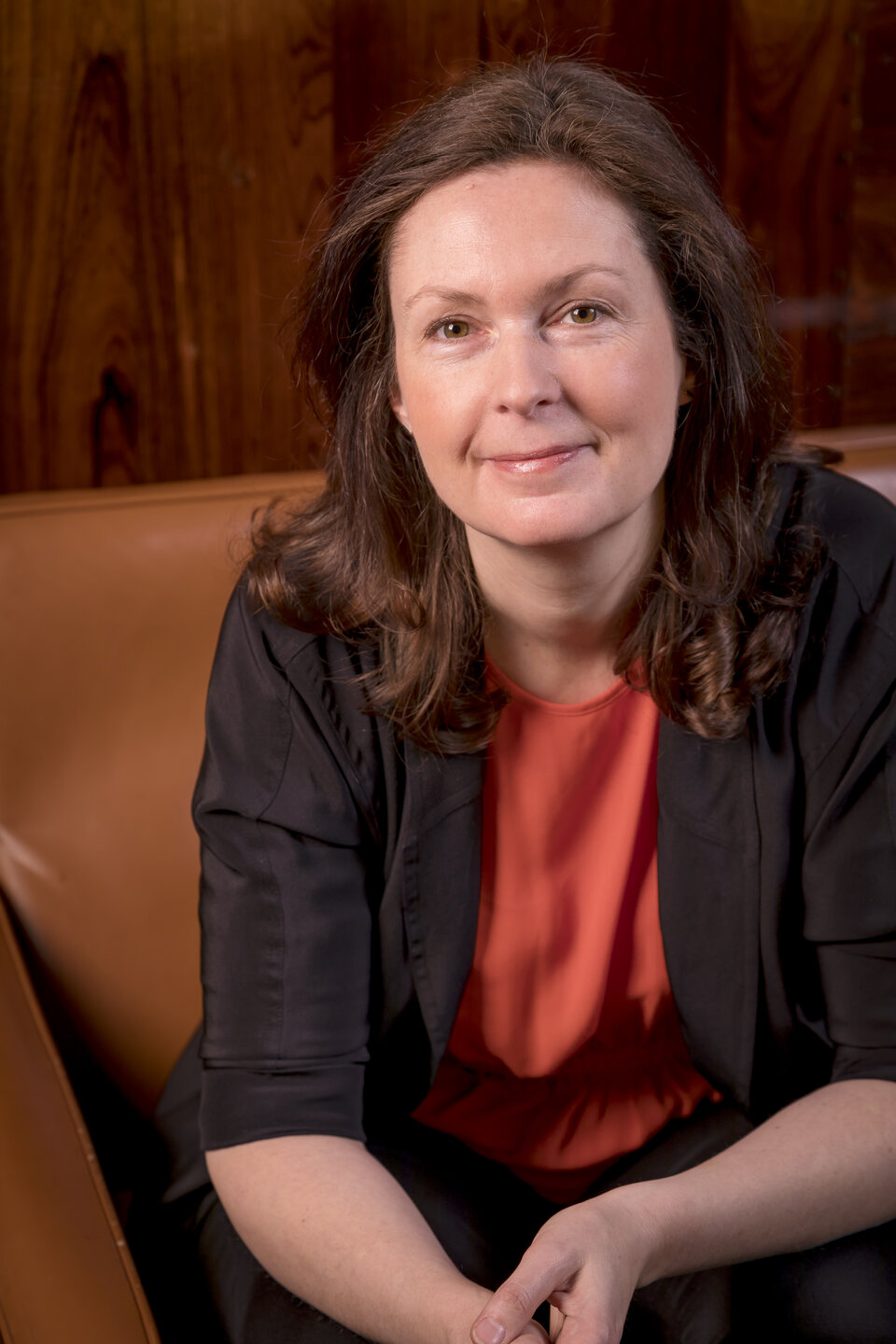
Lucie Green is a Professor of Physics, based at UCL’s Mullard Space Science Laboratory where she studies ejective activity in the atmosphere of the Sun. Lucy is interested in how such eruptions lead to stormy space weather affecting Earth and is passionate about engaging a wide range of audiences with science. Lucie is Chair of Governors at the UCL Academy, Chief Stargazer at the Society for Popular Astronomy and author of “15 Million Degrees: journey to the centre of the Sun”.
“It was fantastic to see so many people engage in this competition and that such a thoughtful set of names were proposed for ESA’s space weather mission,” Lucie explained.
“Vigil really stood out though as capturing the essence of the mission’s aims, which are to keep a watchful eye on our active Sun and alert us to any dangerous emissions that are coming our way.”
A word from our winner

“I am deeply honored that the European Space Agency selected my proposed name, Vigil, for their upcoming solar mission,” explains Francois Gosselin, winner of the #NameTheMission campaign with his submission, Vigil.
“Living in Canada, I have been all too aware of the impact solar activity can have on Earth, such as the 1989 power outage in Quebec caused by a large solar flare.”
Vigil, from the Latin "Vigilis Exceptus", meaning "sentry" was my inspiration for this ESA mission name. Sentry, watching the Sun for incoming events and alerting us perfectly reflects the mission objective.”
Protecting modern life
We are now reliant on interlinked technologies, in space and on Earth, for our everyday lives. But this infrastructure, and all that relies on it, is vulnerable.
Solar storms can damage power grids, disrupt telecommunications and threaten satellites and the vital services they provide. At the same time, as we launch ever-more satellites into orbit we are also creating increasing amounts of debris, dramatically increasing the risk of collision for current and future missions: our success in space could be our downfall.
As part of ESA’s Vision for the future, the new Protect ‘accelerator’ will ensure the resilience of technologies on which modernity depends. By detecting and providing advance warning of oncoming solar storms, we can protect our infrastructure in space and on the ground. By fostering the sustainable use of orbits around Earth – a finite and limited resource – we can ensure the benefits of space will remain accessible to future generations.


